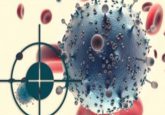Ultraviolet light-induced mutation drives many skin cancers, researchers find
Researchers at Stanford University School of Medicine (CA, USA) have found that a genetic mutation caused by ultraviolet light is likely the driving force behind many human skin cancers. This research was recently published online in Nature Genetics.
KNSTRN, which is involved in ensuring DNA is divided equally during cell division, is an oncogene that has not previously been implicated as a cause of human cancer, yet recent research suggests it might be one of the most commonly mutated oncogenes in the world.
“This previously unknown oncogene is activated by sunlight and drives the development of cutaneous squamous cell carcinomas,” explained Paul Khavari, the Carl J Herzog Professor in Dermatology in the School of Medicine and chair of the Department of Dermatology, Stanford University, and senior author of the paper. “Our research shows that skin cancers arise differently from other cancers, and that a single mutation can cause genomic catastrophe.”
It was found that a particular region of KNSTRN is mutated in approximately 20% of cutaneous squamous cell carcinomas (SCCs) and approximately 5% of melanomas. Khavari and lead author Carolyn Lee made the discovery while investigating the genetic causes of cutaneous SCC.
They compared DNA sequences from tumor cells with those from normal skin and observed for mutations that occurred only in tumors. Three hundred and thirty six candidate genes were identified for further study; the two most commonly mutated genes were found to be CDKN2A and TP53.
By contrast, the third most commonly mutated gene was found to be KNSTRN, which was a surprise. KNSTRN encodes a protein that assists in kinetochore formation, a structure that pulls pairs of newly replicated chromosomes to either end of the cell during division, allowing cells to split along the middle to form two daughter cells with the correct number of chromosomes. If the chromosomes do not separate correctly, the daughter cells will have the incorrect number of chromosomes, so will be aneuploid, and are usually severely dysfunctional. Aneuploidy is a critical early step towards the development of many types of cancer.
In KNSTRN, the mutation was caused by the replacement of cytosine with thymine within a specific short stretch of DNA. The swap suggests that the cell has attempted to repair the damage from high-energy ultraviolet rays, such as those found in sunlight.
“Mutations at this UV hotspot are not found in any of the other cancers we investigated,” continued Khavari. “They occur only in skin cancers.” The ultraviolet-induced mutation was seen in approximately 20% of cases of a premalignant skin condition that usually progresses to SCC, but was never seen in samples of normal skin. This suggests that the mutation is likely to be an early event in the development of SCC.
The identification of this new oncogene will allow researchers to improve their understanding regarding the development of these types of skin cancer, it may also help them to develop new treatments for the disease, and in this case provides a clear link between sun exposure and skin cancer: “Essentially, one ultraviolet-mediated mutation in this region promotes aneuploidy and subsequent tumorigenesis,” said Khavari. “It is critical to protect the skin from the sun.”
Source: Lee CS, Bhaduri A, Mah A et al. Recurrent point mutations in the kinetochore gene KNSTRN in cutaneous squamous cell carcinoma. Nat. Genet. doi:10.1038/ng.3091 (2014) [Epub ahead of print]; Stanford Medicine press release




